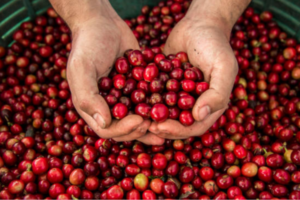Introduction:
Coffee, a ubiquitous beverage enjoyed worldwide, transcends mere sustenance to embody a rich tapestry of culture and history. From its humble origins in the highlands of Ethiopia to its global prominence today, coffee has woven itself into the fabric of societies, shaping rituals, economies, and even politics. In this exploration, we delve into the multifaceted world of coffee, tracing its journey across continents and centuries, uncovering the diverse flavors that tell the story of its cultural significance.
Origins: From Ethiopia to the World
The story of coffee begins in the lush, mountainous regions of Ethiopia, where legend has it that a goat herder named Kaldi first discovered the energizing effects of coffee beans. According to folklore, Kaldi noticed his goats frolicking with unusual vigor after consuming berries from a certain bush. Intrigued, he sampled the berries himself, experiencing a newfound alertness. This serendipitous encounter marked the genesis of coffee cultivation.
Over time, coffee cultivation spread beyond Ethiopia, reaching the Arabian Peninsula by the 15th century. Arab traders were instrumental in disseminating coffee across the Islamic world, where it became an integral part of social and religious customs. Coffeehouses, known as qahveh khaneh, emerged as vibrant hubs of intellectual discourse and social interaction, laying the groundwork for the coffeehouse culture that proliferated in Europe and beyond.
European Expansion and Colonial Influence
The European fascination with coffee began in the 17th century when Venetian merchants introduced the beverage to the continent. Coffeehouses soon sprang up in major European cities, becoming centers of commerce, politics, and culture. The stimulating effects of coffee were lauded for fostering lively debates and intellectual exchange, earning coffeehouses the moniker “penny universities.”
One colonial era further propelled the global spread of coffee cultivation, as European powers established plantations in colonies across Africa, Asia, and the Americas. An coffee trade became intricately linked with imperialism and exploitation, shaping socio-economic dynamics and labor systems in coffee-producing regions. The legacy of colonialism continues to resonate in the coffee industry, with persistent issues of inequality and inequity in production and trade.
Diversity in Cultivation: Terroir and Varietals
One of the most fascinating aspects of coffee is its remarkable diversity of flavors, influenced by factors such as terroir, altitude, climate, and processing methods. The concept of terroir, borrowed from the world of wine, refers to the unique environmental conditions that impart distinct characteristics to coffee beans grown in different regions.
For example, coffees from the highlands of Ethiopia are renowned for their floral aromas, fruity acidity, and tea-like qualities, reflecting the biodiversity of their native environment. In contrast, beans from the volcanic soils of Central America often exhibit notes of chocolate, nuttiness, and balanced acidity, shaped by the region’s microclimates and elevation.
Moreover, the proliferation of coffee varietals, such as Arabica and Robusta, further contributes to the array of flavors available to coffee aficionados. Arabica, prized for its nuanced flavors and lower caffeine content, dominates specialty coffee markets, while Robusta, with its bold, earthy profile and higher caffeine content, is favored for its resilience in challenging growing conditions.
Cultural Rituals and Traditions
Beyond its gustatory pleasures, coffee plays a central role in cultural rituals and traditions around the world. From the elaborate coffee ceremonies of Ethiopia, where beans are roasted, ground, and brewed in a ceremonial fashion, to the leisurely kaffeeklatsch gatherings of Germany, where friends convene over coffee and cake, the rituals surrounding coffee consumption reflect local customs and values.
In Turkey, coffee holds special significance, with the preparation and serving of Turkish coffee elevated to an art form. Served in small cups accompanied by fragrant Turkish delight, the strong, unfiltered brew fosters conviviality and conversation, embodying the Turkish concept of hospitality, known as “keyif” or enjoyment.
In Italy, espresso reigns supreme, symbolizing the quintessential Italian cafe culture. The ritual of sipping espresso at the bar, accompanied by lively banter and people-watching, is ingrained in the fabric of Italian social life. The concept of “sprezzatura,” or effortless style, permeates Italian coffee culture, where the art of coffee-making is revered as a craft honed over generations.
Sustainability and Ethical Considerations
As the global demand for coffee continues to rise, so too do concerns about sustainability and ethical sourcing practices within the coffee industry. Issues such as deforestation, habitat destruction, and the use of harmful agrochemicals pose significant threats to coffee-producing regions and the livelihoods of millions of smallholder farmers.
In response, a growing movement towards sustainable and ethically sourced coffee has gained momentum, with initiatives such as Fair Trade and Rainforest Alliance certification aiming to promote environmental stewardship and social responsibility. These certification programs ensure that coffee is produced in a manner that protects ecosystems, supports farmer livelihoods, and upholds ethical labor standards.
Coffee as a Global Commodity
Coffee has evolved from a cherished local beverage into a global commodity that drives economies and shapes trade relations. The rise of coffee as a cash crop transformed it from a luxury enjoyed by the elite to a staple consumed by people from all walks of life. In the 19th century, coffee became a major export commodity for many countries in Latin America, Africa, and Asia, fueling economic growth and development.
However, the global coffee market is characterized by volatility, with prices fluctuating in response to factors such as weather conditions, geopolitical events, and market speculation. The volatility of coffee prices can have profound implications for coffee-producing countries, where smallholder farmers often bear the brunt of market fluctuations, facing financial instability and poverty.
The emergence of coffee futures markets, where traders speculate on the future price of coffee, adds another layer of complexity to the global coffee trade. While futures markets provide opportunities for hedging and risk management, they can also exacerbate price volatility and distort market dynamics, particularly for small-scale producers who lack access to information and resources.
Despite these challenges, coffee remains a vital source of income for millions of people worldwide, supporting livelihoods and communities in some of the world’s most marginalized regions. Initiatives such as direct trade and specialty coffee programs seek to empower coffee farmers by establishing direct relationships between producers and consumers, ensuring fair prices and sustainable practices.
The Art and Science of Coffee Roasting
Roasting is a critical stage in the coffee production process, where green coffee beans undergo a transformation that unlocks their full flavor potential. The art and science of coffee roasting require skill, precision, and an understanding of the complex chemical reactions that occur during the roasting process.
Roasters carefully control variables such as temperature, airflow, and roasting time to achieve the desired flavor profile, balancing acidity, sweetness, and bitterness to create a harmonious cup of coffee. The degree of roast, ranging from light to dark, profoundly impacts the flavor and aroma of the final brew, with each roast level offering distinct characteristics.
Lighter roasts preserve the inherent flavors of the coffee bean, showcasing delicate floral and fruity notes, while darker roasts develop rich, caramelized flavors with pronounced bitterness and body. Roasters often experiment with different roast profiles to highlight the unique qualities of specific coffee varietals, terroirs, and processing methods.
In recent years, the specialty coffee movement has sparked a renaissance in artisanal coffee roasting, with roasters pushing the boundaries of flavor and innovation. From single-origin micro-lots to experimental processing techniques, specialty coffee roasters are at the forefront of coffee culture, elevating the appreciation of coffee as a gastronomic experience.
Furthermore, advancements in technology, such as computerized roasting systems and data analytics, have revolutionized the roasting process, enabling roasters to achieve greater consistency and precision. By marrying tradition with innovation, coffee roasters continue to push the boundaries of what’s possible, unlocking new dimensions of flavor and delighting coffee enthusiasts around the world.
Conclusion:
In the intricate tapestry of human history and culture, few beverages have left as indelible a mark as coffee. From its origins in the ancient highlands of Ethiopia to its present-day status as a global commodity, coffee has traversed continents, shaped economies, and woven itself into the fabric of societies around the world. As we conclude our exploration of the multifaceted world of coffee, several key themes emerge, underscoring its enduring significance and complexity.
Firstly, the journey of coffee from its birthplace in Ethiopia to its dissemination across the globe highlights the power of cultural exchange and human ingenuity. Whether through the bustling coffeehouses of 17th-century Europe or the vast plantations of colonial America, coffee has been a catalyst for social interaction, intellectual discourse, and economic development.
In conclusion, the flavors of coffee are more than just a sensory experience—they are a reflection of our shared history, culture, and values. As we savor each cup of coffee, let us also pause to appreciate the stories it carries and the connections it fosters among us. In embracing the richness and complexity of coffee, we embrace a world of flavors and possibilities, united by our love for this beloved beverage.



